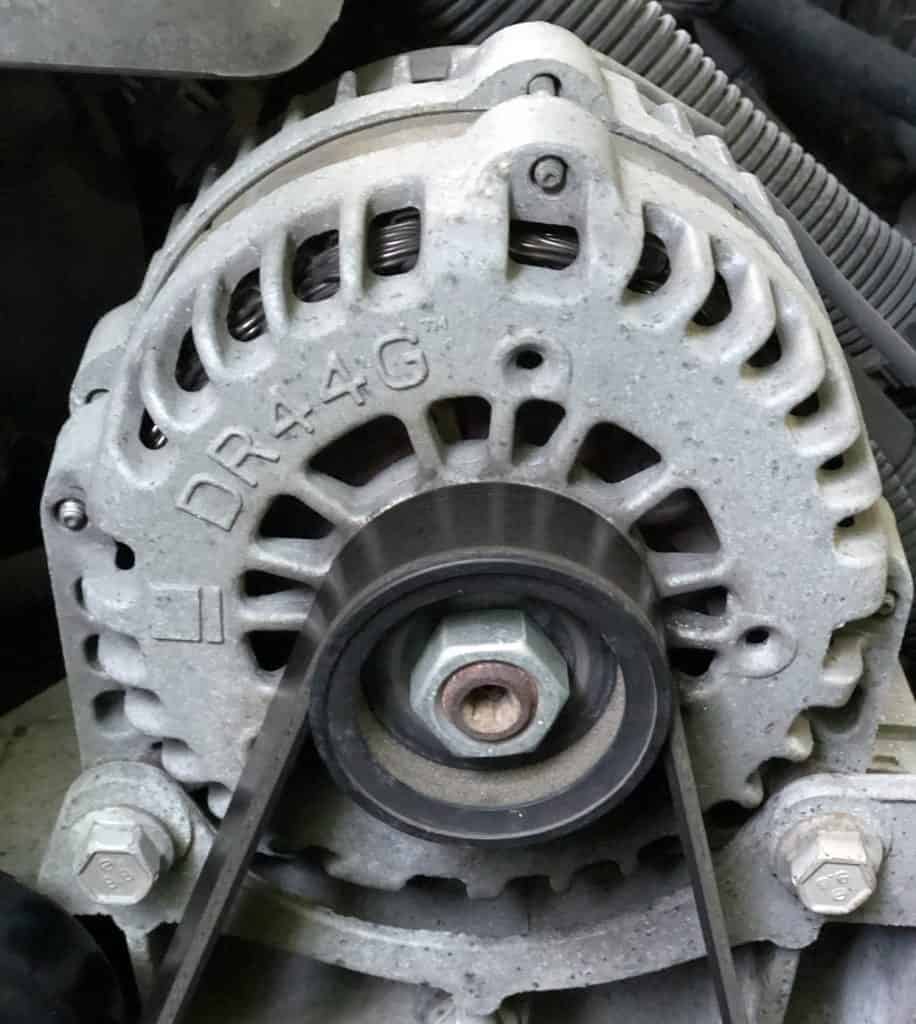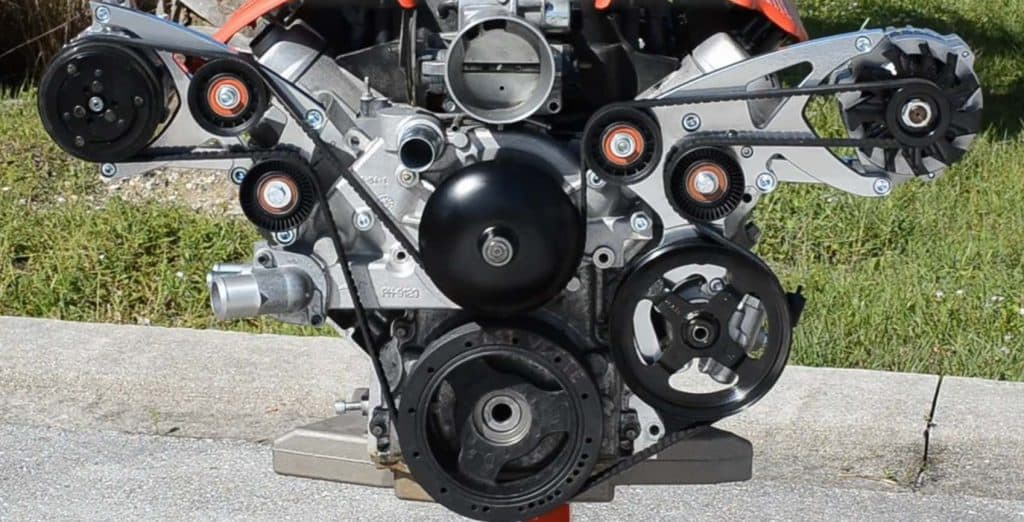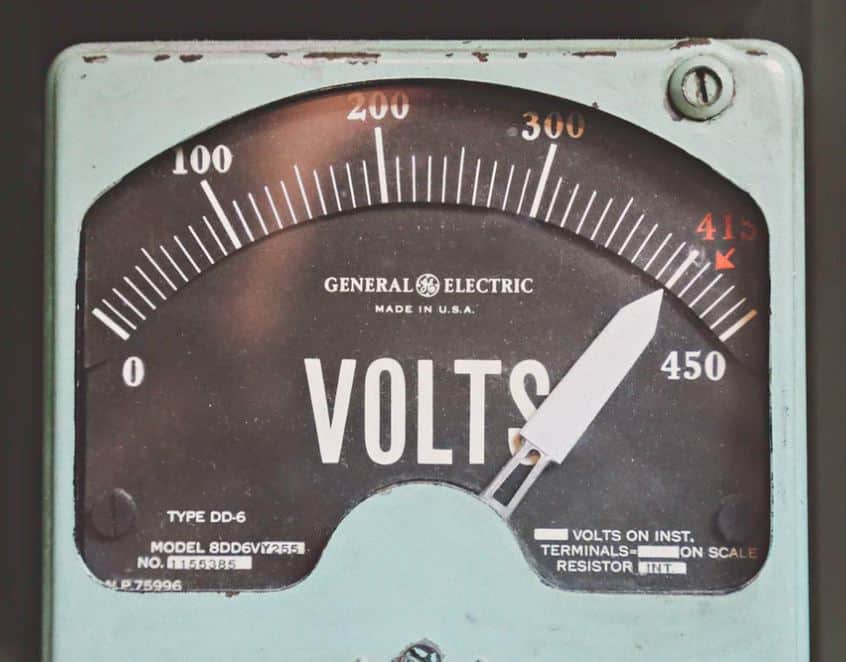If you are relatively new to DIY auto repair, or just trying to learn more about how your car works you may be wondering what an alternator does?
Simply put, what an alternator does is provide electrical current to your car or truck’s electrical system, and charge the battery at the same time.
How an Alternator Works
All modern vehicles run off of a 12 volt electrical system. But, an alternator puts out between 13 to 15 volts of electricity. This allows it to charge the battery and power the vehicle’s electrical system at the same time.
There are three main components to the alternator. They are the stator, rotor, and diode.
But an alternator also needs its pulley to grab the kinetic energy from the serpentine belt, and it needs the voltage regulator to avoid poisoning the battery with too much current.
Here’s how an alternator turns physical energy into electricity:
1. Belt + Pulley
The engine’s serpentine belt turns the alternator’s pulley. The engine needs to be turning for this to happen. This turns the alternators rotor…
2. Rotor + Stator
The rotor is a magnet that is spun around a group of copper wires (the stator). It spins very fast, and creates an electromagnetic charge. Once this charge is created it is sent to the diode…
3. Diode
Once the stator and rotor have created electricity, the diode changes the charge from AC into DC, which is what all vehicles use. Before it can go to the vehicle and battery, the DC current must still pass through a voltage regulator…
4. Voltage Regulator
The voltage regulator is responsible for ensuring that the battery and electrical system is not oversaturated with electrical current. This can fry the battery.
On older cars, the voltage regulator was separate from the alternator, but now they are always one unite
Battery vs Alternator Differences
Many people think that the car is powered by the battery when the engine is running. But, it’s really the alternator that is providing the voltage.
The battery has two primary jobs:
- Provide enough voltage to the starter that the engine will turn over
- Keep energy in reserve that it can respond to sudden requests before the alternator can compensate
Other than that, the alternator is doing all of the heavy lifting. Here’s what the alternator does:
- Charges the battery
- Powers all parts of the vehicle
- Maintains proper system voltage
Signs of a Bad Alternator
When an alternator goes bad, it’ll let you know. The obvious first sign is the battery light. Few vehicles have a separate warning light for the alternator.

1. Battery Light or Alternator Light
The number one symptom of a bad alternator is the battery light. This indicates that the charge in the electrical system is below the minimum threshold.
Modern cars and trucks can turn the battery light on if the cranking amperage provided by the battery is too low. If this were the case, the battery light is probably indicating that the battery really is bad.
If the battery light turns on while you are driving, it almost always means that the alternator is going bad.
2. Electrical Accessories Not Working Properly
As we learned earlier, the alternator is what powers the car once it has started. This means that as long as it started, your vehicle should run and drive completely normally.
There are certain things that will work noticeably worse with a bad alternator. Such as:
- Headlights
- Power Windows
- Radio (may hear a buzzing sound)
- Blower Motors
Can My Car Run Without the Alternator?
Yes, a vehicle can run without an alternator for a limited amount of time (think minutes, not hours).
Once the alternator fails, the vehicle in question will be running solely off of the voltage stored in the battery. The factors that determine how long it can run without the alternator are how old the battery is and the load placed upon it.
When an alternator fails, there is nothing you can do about your battery’s age, but you can do something about the load.
Maximize the Time With No Alternator
In order to get the most mileage possible, turn everything off that’s not the engine. This includes climate control, daytime running lights, anything plugged into an accessory port, the radio, and anything else that you can live without that is drawing current.
No matter what you do, getting your vehicle safely off the road is the name of the game when the alternator goes bad. Don’t try and make it home. Try and make it someplace safe.
Also, when the alternator is bad, shutting the vehicle down is how a lot of folks get stranded. There won’t be enough electricity left in the battery to turn the engine over.
Conclusion: What does an alternator do?
What an alternator does is provide electricity to your vehicle while running, and provides the necessary voltage to keep the battery charged, so that it can be ready to engage the starter motor.




